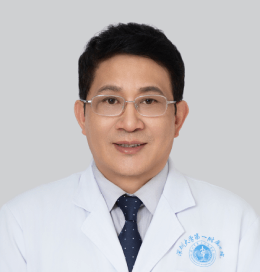
Personal Information
– Gender: Male
– Age: 60
– Academic Titles: M.D., Chief Physician, Professor, Ph.D. Supervisor
Professional Experience
– 1986: Graduated from Shandong Medical University (now Shandong University School of Medicine).
– 1986–2009: Served at Qilu Hospital and the Second Hospital of Shandong University.
– 2001: Promoted exceptionally to Professor, Chief Physician, and Ph.D. Supervisor at Shandong University.
– 2006: Appointed as Academic Leader of Plastic Surgery in Shandong Province.
– 2009–2013: Director of the 16th Department of Plastic Surgery at Plastic Surgery Hospital, Chinese Academy of Medical Sciences (Peking Union Medical College). Concurrently awarded the title of Level-II Professor and appointed as Ph.D. Supervisor at Tsinghua University Peking Union Medical College.
– 2018–Present: Founder and Director of Jinglong Cai Aesthetic Medical Clinic (Jinan).
Currently serves as:
– Ph.D. Supervisor at Yanbian University Hospital (a Chinese 211 Project university).
– Technical Dean of the Scar Repair Center at Beijing United Lige First Aesthetic Medical Hospital.
Professional Affiliations
– Current Roles:
– Chairman, Scar Medicine Branch, International Medical Aesthetic and Plastic Surgery Association.
– Chairman, Scar Repair and Aesthetic Modification Committee, *Medical Aesthetics and Cosmetology* Editorial Board.
– Chairman, Popular Science Expert Committee, Chinese Association of Plastic and Aesthetic Surgery (CAPAS).
– Vice President, Scar Medicine and Anti-Aging Branches, CAPAS.
– Incoming Chairman, Scar and Aesthetic Plastic Surgery Committee, Chinese Association of Integrated Traditional and Western Medicine.
– Previous Roles:
– Chairman (1st and 2nd terms), Scar and Aesthetic Plastic Surgery Committee, Chinese Association of Integrated Traditional and Western Medicine.
– Founding Chairman, Scar Sub-Committee, Chinese Medical Doctor Association.
– Leader, National Scar Collaboration Group, Chinese Medical Health Promotion Association.
Academic Contributions
– Publications:
– Authored 5 monographs on scar medicine, including 《Modern Scar Therapeutics》(China’s first comprehensive scar textbook).
– Co-edited 6 textbooks, including 《Chinese Plastic Surgery》 and 《Modern Aesthetic Plastic Surgery》.
– Contributed to over 20 academic books.
– Research: Completed 5 national/provincial scar-related research projects; published 200+ papers.
– Education & Outreach:
– Organized 5 national scar conferences; lectured at 10+ national scar workshops.
– Hosted 30+ 《Jinglong Cai Scar Masterclass》 sessions.
– Published 1,000+ scar-related medical science articles and videos.
– Clinical Expertise:
– Pioneer of the “Jinglong Cai Scar Treatment Model”, integrating surgical and non-surgical approaches for safe, effective scar management across all ages.
– Specializes in resolving keloids and complex scars, aiming to establish a global referral center for treating scar cases.
Abstract submitted for the 5th International Keloid Symposium
Objective: To explore the cure criteria and treatment model for keloids.
Methods:
- A clinical classification of keloids was proposed to guide treatment selection. Patients were categorized into four types based on lesion location and quantity: single-site solitary, multi-site solitary, single-site multiple, and multi-site multiple. Solitary lesions were further subclassified by area and thickness: small-thin (<5 mm thickness, treatable via excision, cryotherapy, laser, radiotherapy, or drug injection), small-thick (>5 mm thickness, requiring surgical excision), large-thin (<5 mm thickness, needing flap transfer, tissue expansion, or skin grafting), and large-thick (>5 mm thickness, requiring complex reconstruction). Multiple lesions were classified as isolated (treatable sequentially) or diffuse (requiring prioritized management of symptomatic or ulcerated lesions alongside systemic therapy).
- Treatment strategies emphasized efficacy-risk balance, early intervention, and combination therapies (surgery, photoelectric techniques, radiotherapy, intralesional injections). The “Cai Jinglong Keloid Management Model” was implemented, focusing on systematic, comprehensive, and dynamic approaches.
- The Cai Jinglong Model emphasized:
Systemic therapy: Addressing internal imbalances and infections via oral/topical medications.
Combination therapy: Integrating surgical and non-surgical methods.
Dynamic therapy: Long-term management with regular follow-ups and adaptive interventions.
Treatment stages included:
Wound healing promotion;
Early post-healing scar modulation (laser, radiotherapy, botulinum toxin);
Mature scar management (tailored surgical/non-surgical approaches);
Patient education on recurrence risks and mandatory 3-month follow-ups.
- Three-phase efficacy criteria were established:
Short-term (6 months): 80% cure rate (no erythema, induration, or pruritus);
Mid-term (12 months): 90% cure rate;
Long-term (24 months): 100% cure rate (clinical endpoint).
- Cure was defined as lesion flattening/softening with ≥2-year symptom-free stability.
- From January 2010 to June 2024, 2,246 patients were treated and evaluated via Vancouver Scar Scale (VSS), Sawada clinical grading, and VAS scores during 3-month follow-ups (mean 3 years).
Results:
Short-term: 80% cure rate; VSS 2.6±0.5, Sawada 1.8±0.6, VAS 1.2±0.4.
Mid-term: 90% cure rate; VSS 1.3±0.3, Sawada 0.9±0.2, VAS 0.7±0.3.
Long-term: 100% cure rate; all scores normalized to 0, achieving stable clinical endpoints.
Conclusion: The Cai Jinglong Model achieves complete keloid remission through systematic, dynamic, and multidisciplinary strategies.
Keywords: Keloid; Treatment model; Efficacy criteria; Cure standard










